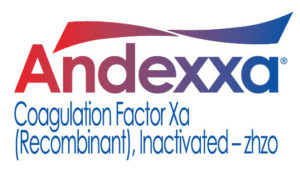
In the adjusted analysis of in-hospital mortality risk (Table 2), treatment with AA demonstrated a 31% lower likelihood of death compared to 4F-PCC (OR, 0.69 95% CI, 0.49-0.98). In-hospital mortality occurred in 6% (n=78) and 8% (n=121) of patients in the AA and 4F-PCC groups, respectively (P=0.008). Gastrointestinal (GI) was the most common type of bleed, and most bleeds were spontaneous (Table 1). Unadjusted baseline characteristics, including time since last anticoagulant dose, were similar between groups (Table 1). Results: This study included data from 2,830 patients (AA, n=1,366 4F-PCC, n=1,464) across 184 US hospitals between 5/2018 and 9/2021. The primary outcome was in-hospital mortality, which was analyzed using a multivariate logistic regression. Continuous variables were compared using Student’s t-test. Categorical variables were compared using the χ2 test.

Methods: This retrospective study included patients who were ≥18 years of age, had an ICD-10-CM diagnosis code of D68.32 indicating bleeding due to extrinsic factors (ie, anticoagulant) as part of a hospital admission, and received treatment with AA or 4F-PCC during the index hospitalization.

There are limited real-world comparative-effectiveness data on the reversal agents andexanet alfa (AA) and four-factor prothrombin complex concentrate (4F-PCC) for factor Xa (FXa) inhibitors.Īims: We describe the utilization and outcomes associated with managing FXa inhibitor or enoxaparin-related bleeding hospitalizations with either AA or 4F-PCC in routine practice. Theme: Coagulation and Natural Anticoagulants » Coagulation Factors and Inhibitorsīackground: Anticoagulant-related major bleeding is associated with increased morbidity and mortality.


 0 kommentar(er)
0 kommentar(er)
